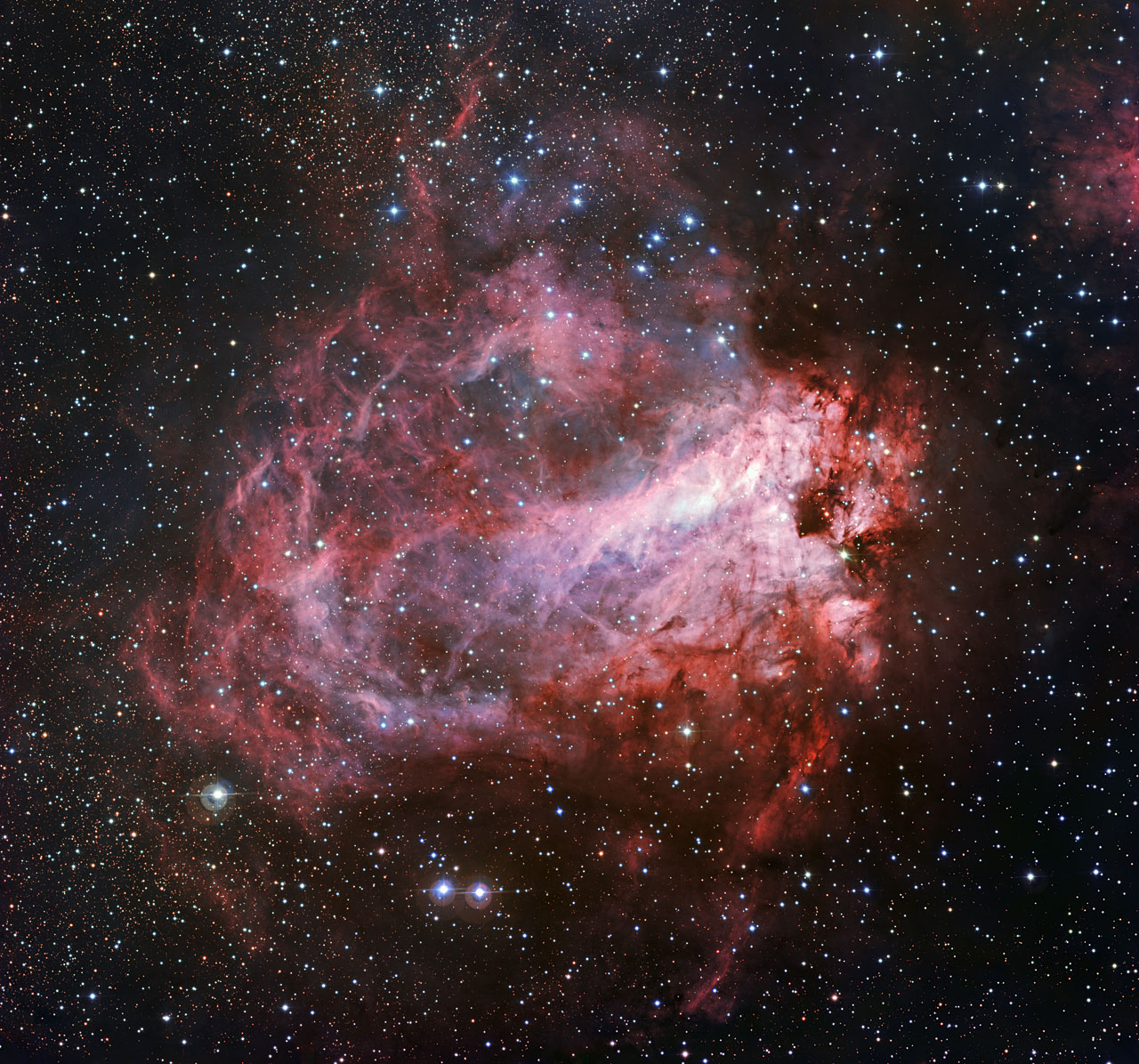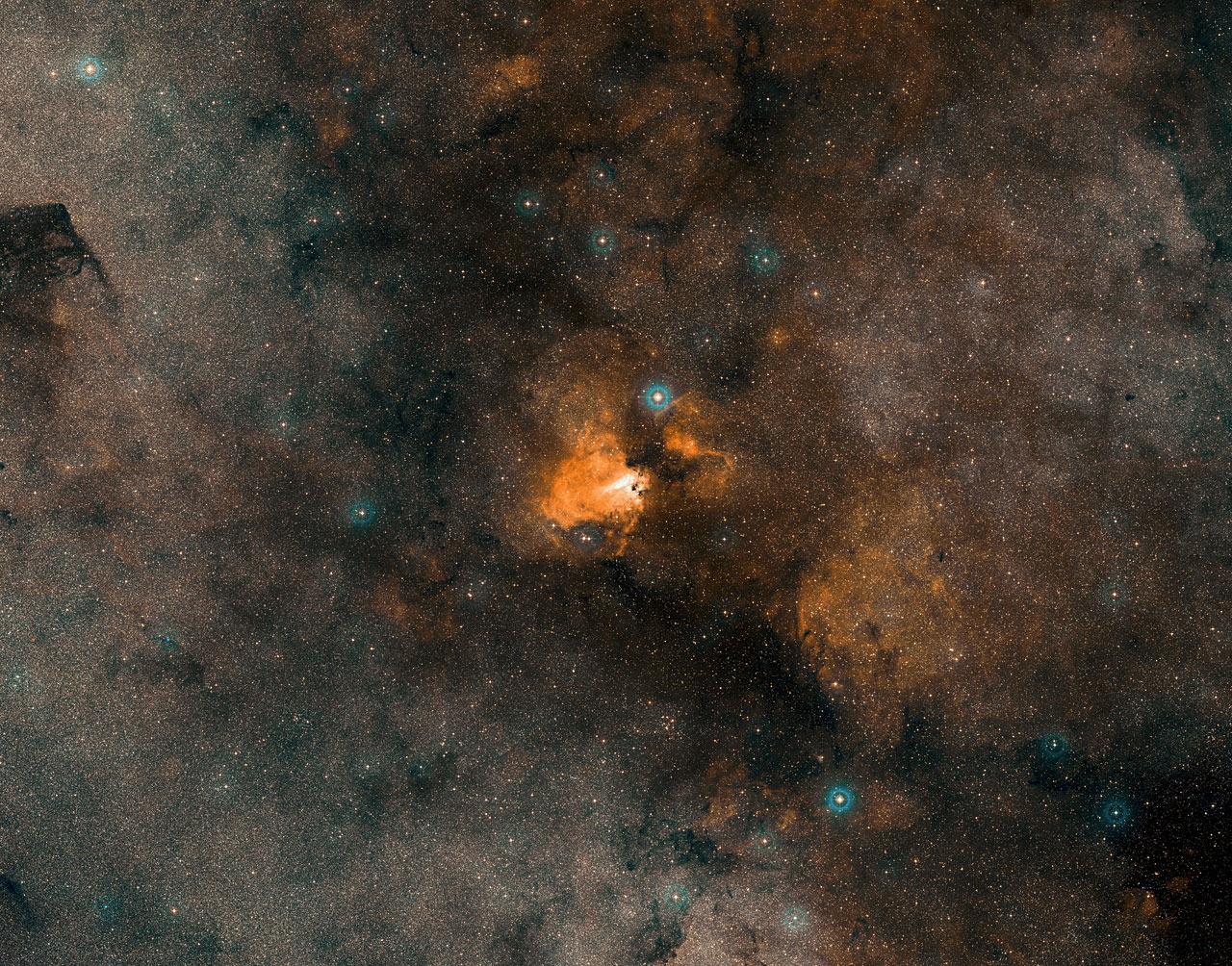A Rose by Any Name: Nebula Blossoms in Sweet Space Photo, Video
Omega Nebula, Swan Nebula, Checkmark Nebula, Horseshoe Nebula, Lobster Nebula — whatever you call it, the spectacular star-forming Messier 17 sparkles in a new photo.
On Space.com alone, namers have called out the nebula's similarity to a swan, the Greek letter omega and a horseshoe or lobster (although there's another Lobster Nebula, too). But this new image, taken by the Wide Field Imager on the 2.2-meter (7.2 feet) telescope at the European Southern Observatory's (ESO) La Silla Observatory in Chile, makes a convincing argument for something rosier.
A nebula is an enormous cloud of dust and gas that often acts as a stellar nursery — the gas collapses to form newborn stars. In this case, the rose's petals are picked out in the reddish glow of hydrogen gas, heated up by ultraviolet light released from the blue and white pinpricks of newly formed stars. [Watch: A Rose (Nebula) By Many Other Names]
The white at the center comes from the hottest gas emitting light that mingles with starlight, ESO officials said in a statement. The nebula's gas is estimated to be more than 30,000 times the mass of the sun, they added.

The nebula is 5,500 light-years from Earth, and rests in the constellation Sagittarius. It hosts more than 800 stars, including the open star cluster NGC 6618, a collection of stars born together and held near one another by gravity. The darker red dust in the image is glowing along with the lighter stuff — infrared cameras reveal more of the light the dust gives off.
Its only constant name, Messier 17, isn't even its first designation: 20 years before French astronomer Charles Messier categorized the nebula in 1764, it was discovered by another astronomer, Jean Philippe de Chéseaux, who described at the time it as the "perfect form of a ray or the tail of a comet." But whatever its name, the rosy nebula remains sweet to see.

Email Sarah Lewin at slewin@space.com or follow her @SarahExplains. Follow us @Spacedotcom, Facebook and Google+. Original article on Space.com.
Get the Space.com Newsletter
Breaking space news, the latest updates on rocket launches, skywatching events and more!
Join our Space Forums to keep talking space on the latest missions, night sky and more! And if you have a news tip, correction or comment, let us know at: community@space.com.

Sarah Lewin started writing for Space.com in June of 2015 as a Staff Writer and became Associate Editor in 2019 . Her work has been featured by Scientific American, IEEE Spectrum, Quanta Magazine, Wired, The Scientist, Science Friday and WGBH's Inside NOVA. Sarah has an MA from NYU's Science, Health and Environmental Reporting Program and an AB in mathematics from Brown University. When not writing, reading or thinking about space, Sarah enjoys musical theatre and mathematical papercraft. She is currently Assistant News Editor at Scientific American. You can follow her on Twitter @SarahExplains.









